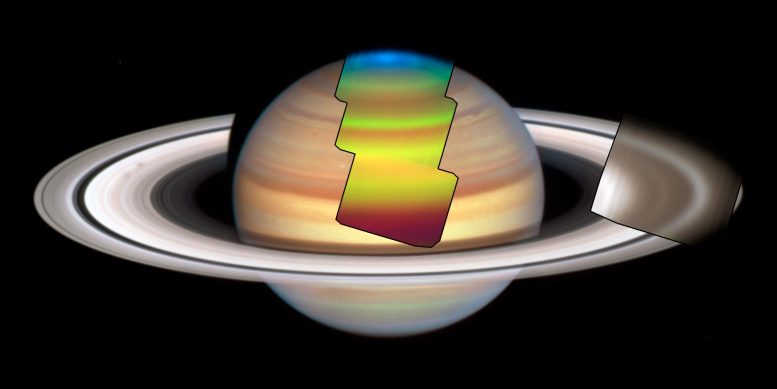
Montage of JWST MIRI/MRS observations of Saturn in November 2022, requiring four tiles to study Saturn’s northern hemisphere and rings. MIRI is sensitive primarily to temperature; Saturn’s colors are a combination of blue (11.6 µm, which senses stratospheric temperature), green (10.1 µm, a probe of upper tropospheric temperature) and red (10.3 µm, sensing lower tropospheric temperature) using MIRI’s MRS Channel 2. The rings use a different combination of filters: blue (13.5 µm), green (14.6 µm) and red (15.5 µm) from MRS Channel 3, which provides a slightly wider field of view. A Hubble visible-light observation, acquired in September 2022, is shown in the background for comparison. Credit: NASA, ESA, and Amy Simon (NASA-GSFC); Image Processing: Alyssa Pagan (STScI))
Observations of Saturn by University of Leicester planetary scientists using the James Webb Space Telescope (JWST) of the famous ringed planet.
A team of planetary scientists has found that Saturn’s late northern summer is experiencing a cooling trend, as huge planetary-scale flows of air have reversed direction as autumn approaches.
The new observations have also provided a last glimpse of Saturn’s north pole, with its enormous warm vortex filled with hydrocarbon gases, before the pole begins to recede into the darkness of polar winter.
This interplanetary weather report is thanks to new images analyzed by a team led by the University of Leicester from the JWST and published in JGR:Planets. They have provided new insights into the changing seasons on the massive outer planet, famous for its icy rings.
Like Earth, Saturn has an axial tilt and experiences seasons in the same way. However, Saturn takes 30 years to orbit the Sun, so the seasons last for 7.5 Earth-years. Northern-hemisphere summer on both worlds is now coming to an end. While Earth is heading for northern autumn equinox in September, Saturn is heading for northern autumn equinox in 2025, which means the north poles of both planets are heading for extended periods of polar winter.
Tools and Findings
The Leicester team used the Mid-Infrared Instrument (MIRI) instrument on JWST to study Saturn’s atmosphere in infrared light, which allows them to measure the temperatures, gaseous abundances, and clouds from the churning cloud tops to regions high in the atmosphere known as the stratosphere. The MIRI instrument splits the infrared light into its component wavelengths allowing scientists to see the fingerprints of the rich variety of chemicals within a planet’s atmosphere.
In the image, created by combining just a few of the wavelengths observed by MIRI, the bright thermal emission from the north pole stands out in blue. The warm 1500-km wide north polar cyclone (NPC), which was first observed by the Cassini mission, can be seen at the north pole. This is surrounded by a broader region of warm gases called the north-polar stratospheric vortex (NPSV), which formed in Saturnian spring and has persisted throughout its northern summer.
These are warm vortices high in the stratosphere, heated by the sun’s warmth during Saturn’s long summer season. As the autumn equinox approaches in 2025, the north polar stratospheric vortex will begin cooling down and will disappear as the northern hemisphere recedes into the darkness of autumn.
Animation of JWST MIRI/MRS observations of Saturn in November 2022, showing how Saturn’s appearance varies at different wavelengths. Yellows represent bright and warm parts of Saturn’s atmosphere, while the purple areas are cooler and darker. The bright north polar vortex shows up clearly in wavelengths sensing the stratosphere, whereas Saturn’s banded appearance is more readily apparent at wavelengths sensing the troposphere. The spatial resolution of the images gets worse at longer wavelengths due to diffraction. A Hubble visible-light observation, acquired in September 2022, is shown in the background for comparison. Credit: NASA, ESA, and Amy Simon (NASA-GSFC); Image Processing: Alyssa Pagan (STScI)
Comparative Observations and Insights
By modeling the mid-infrared spectra, the scientists noticed that the distributions of stratospheric temperatures and gases at this particular point in Saturn’s seasonal cycle were rather different to those observed by the Cassini mission during northern winter and spring. Saturn has a large-scale stratospheric circulation pattern with warmer temperatures and excess hydrocarbons, like ethane and acetylene, in the northern midlatitudes in winter, signifying sinking of hydrocarbon-rich air from above. Air was thought to rise in the southern summer midlatitudes, cross the equator, and sink into the northern winter midlatitudes.
The MIRI Medium-Resolution Spectrometer results taken in November 2022 revealed that this stratospheric circulation has now reversed and cool stratospheric temperatures and low hydrocarbon abundances are seen in the north between 10oN and 40oN, suggesting upwelling of hydrocarbon-poor air in the summer, which will then be flowing towards the south.
Remarks From Experts
Professor Leigh Fletcher, from the University of Leicester School of Physics and Astronomy, said: “The quality of the new data from JWST is simply breath-taking – in one short set of observations, we’ve been able to continue the legacy of the Cassini mission into a completely new Saturnian season, watching how the weather patterns and atmospheric circulation respond to the changing sunlight.
“JWST can see in wavelengths of light that were inaccessible to any previous spacecraft, producing an exquisite dataset that whets the appetite for the years to come. This work on Saturn is just the first of a program of observations of all four giant planets, and JWST is providing a capability beyond anything we’ve had in the past – if we can get so many new findings from a single observation of a single world, imagine what discoveries await?”
Saturn was chosen as an early target for JWST as a test of its capabilities. Dr. Oliver King, a postdoctoral researcher in Leicester’s School of Physics and Astronomy, explained: “Because it is big, bright, rotating, and moving across the sky, it provides a challenge for the small fields-of-view of the MIRI instrument – MIRI can only see a small area of Saturn at any one time, and we’re at risk of saturating the detectors because the planet is so bright compared to JWST’s usual targets. The observations were taken as three tiles, stepping from the equator to the north pole, and then out to the rings for a final tile.”
Professor Fletcher adds: “We started designing these Saturn observations more than 8 years ago, so when that first data landed in late 2022, it was certainly a career highlight: the Leicester team of planetary scientists crammed around a computer screen, astonished by the quality of the new data, and maybe sipping some sparkling wine to celebrate. It would not have been possible without the wider team of experts that contributed to the Saturn program, especially the folks at Space Telescope who put up with our endless questions and problems as we dealt with all the challenges of a brand-new telescope.
“No spacecraft has ever been present to explore Saturn’s late northern summer and autumn before, so we hope that this is just the starting point, and that JWST can continue the legacy of Cassini into the coming decade.”
Reference: “Saturn’s Atmosphere in Northern Summer Revealed by JWST/MIRI” by Leigh N. Fletcher, Oliver R. T. King, Jake Harkett, Heidi B. Hammel, Michael T. Roman, Henrik Melin, Matthew M. Hedman, Julianne I. Moses, Sandrine Guerlet, Stefanie N. Milam and Matthew S. Tiscareno, 12 September 2023, Journal of Geophysical Research: Planets.
DOI: 10.1029/2023JE007924

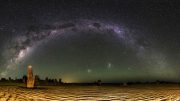

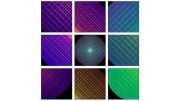
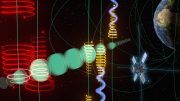


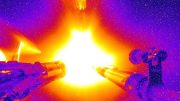

Be the first to comment on "Ring in the Changes: Saturn’s Swirling Seasonal Shifts Revealed"